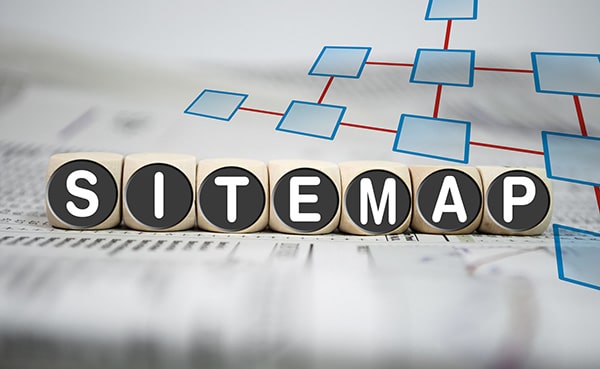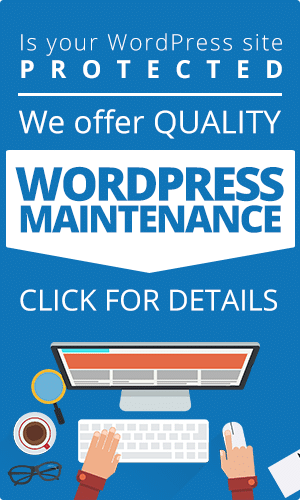Why You Need A Great Sitemap design for your Modern Website
If you want your first-time visitors to become long-term end users, you need to create an appealing sitemap design for your website.
Let me rephrase this in another manner: have you ever visited a site and left almost immediately? That’s because every website visitor decides whether or not to use a site within the first ten-twenty seconds of landing on it.
If a website isn’t easy to navigate, your visitors won’t stay long and there’s very little chance you’ll convert them into a client or customer.
In this guide, you’ll find out what sitemap design is, how it is relevant to your site, and how to create one. If this is what you want to know, you’re in the right place.
What Is Sitemap Design?
A sitemap design is a website planning tool that helps properly arrange how the pages on your website are interlinked to achieve your business goal. It shows how users will move from one page to another in the process of conversion.
To properly understand a sitemap design, you can think of it as a flow chart diagram that shows how your website is structured to lead your client to your business goal.
Another term that would prop up in your search for the meaning of a sitemap design is ‘ XML sitemap’, an abbreviation for “Extensible Markup Language”. The XML sitemap is like a skeletal view of your website that is submitted to search engines.
Let me add that the XML sitemap is an essential SEO tool that you cannot overlook. It plays an important role in your site’s ranking on search engines. You will discover the relevance of this tool as you read further.
Why Do You Need A Sitemap Design
Let’s begin with a logical consequence:
- Customers use a website that is all about them
- Websites with great user experience often have better search engine optimization (SEO)
- A site with better SEO attracts the right visitors
- The attracted visitors are most likely to convert
A great sitemap will help your modern website in diverse ways. From easy navigation to having a better user experience and more visitors, a well-set sitemap would absolutely increase your conversion rate.
Whether your website is new or has been around for a while, if you don’t have a working sitemap, you are missing out on the big catch.
The following are the benefits of having a great sitemap for your modern website:
- Ascertain your website’s Goal
- Avoid duplicate content
- Help your team stick together
Let’s dig further into each of these a bit more:
Hitting your Goals
In this “tweet, text, and twerk” world (to borrow Denzel Washington’s words), it’s becoming increasingly difficult to sustain the short-attention-span audience of the web.
Your site needs to sustain your customer’s attention: as much as possible, you want your customer to identify your website goal and a great sitemap can definitely help you achieve this.
Your website should not leave the visitors wondering what took them there in the first place. A great sitemap will enable you to get your purpose across to your visitors and they usually fall into two categories:
- Grab information
- Give information
A sitemap will help you build your website in line with your goals. It makes it easy to structure your site so that your visitors know exactly what you expect of them.
A sitemap alone cannot create magic. You need an ample wireframe to get your site to portray what you have in mind. While a sitemap helps you plan the pages in a hierarchical order, a wireframe takes care of the layout.
Avoid duplicate Content
Without a sitemap, you may not know what information you have shared already. The chances of sending a message more than once will be high.
Even if you take a record of the messages you have shared to avoid sharing again, one or two may slip off your fingers.
A great sitemap will help you limit instances of duplicate content, if not totally prevent it.
It’s no longer news that Search engines frown at plagiarized content. So duplicate content could negatively affect your rankings.
Also, duplicate content is disappointing for your customers. Imagine creating an annoying sense of dejavu in your readers because you sent them something they’ve read before.
With a great sitemap design, If you have cause to share information again, you can link to the present page and you would have achieved your aim.
Sticking Together
There are always several people involved in building a website and setting it in motion.
Usually, there’s the CEO, the webmaster, content writers, editors, project manager, sales/marketing team, and others. And it’s important to keep everyone abreast of the website trend since everyone handles specific aspects of the project.
As such, to meet the website’s goal, a sitemap is needed to keep everyone on the same page. A sitemap will enable everyone to see the level of the project and how it is fairing.
A sitemap will enable everyone to become more organized and focused on the website’s goals. Stakeholders can air their views and suggest an adjustment.
Finally, through your sitemap, search engines can easily locate a page in your site, including when and how often you update it.
Seeing the benefits of having a sitemap? But do you know how to design a sitemap? If no, do not worry, we will show you how right now.
How to Make a Sitemap
There is no straightjacket way of making a sitemap. Your websites’ purpose is central to the structure of its sitemap. A website whose goal is to transact with its visitors is certainly going to have a different sitemap from a site whose goal is to convey or capture information.
In other words, what you want to achieve with your site will determine the outlook of your sitemap.
Another essential factor to consider when creating a sitemap is your preference and convenience.
Know what will be easier and faster for you to create. You may also want to consider the edition. Will your choice be easy for you to edit?
Since you will be working with a team or stakeholders, you should create a sitemap that will make working together easy. Bearing these in mind, there are several types of sitemaps you can create.
Some common types of sitemaps include the list, the vertical diagram, and the horizontal diagram.
-
The List
To understand this kind of sitemap, think of it like having an outline of the pages in your site. It outlines the pages on your website in a hierarchical structure.
In other words, this method allows you to display the hierarchy of your pages in a simple and straightforward manner.
This type of outline is fast and easy to create. It is also simple to edit. However, a disadvantage of this method is that it doesn’t show user flow.
-
The Vertical Diagram
The vertical diagram type of sitemap uses boxes to show how your pages are structured and the lines to show user flow.
This style makes the vertical diagram sitemap easy to read and understand. The downside to this type of sitemap is that it is not easy to edit.
You should bear in mind that although the user flow is displayed from left to right, viewing the scope of a website’s hierarchical layout in a different format might be easier.
-
The Horizontal Diagram
This is a horizontal version of the vertical diagram style. It shows the webpages, links, and user flow, all in a horizontal layout. This sitemap style shows the site’s hierarchy visually. In fact, it holds hierarchies and user flow in a harmonious combination.
Creating the visual diagram sitemap is super easy with the Slickplan visual generator. This is essential to creating the sitemap without hassle. With this tool, you can create the horizontal diagram sitemap in a space where it will be easy for you to edit it later.
The type of sitemap you choose to create depends on your choice. You may choose according to what you are familiar with, your aesthetic preference, or what you can learn easily.
Although all three methods are at your disposal, it would be best to allow a professional to handle your sitemap if you can’t decide which is best for your website.
Final Thoughts
You can decide if you want to keep the traffic coming from those ten-twenty second’s visitors by the kind of sitemap design you choose for your website.
57% of mobile phone users will leave a site with a poor user interface. If you want to create a friendly and easy user interface for your website both on desktop and mobile, you cannot overlook the need for a great sitemap.
Above all, what’s the use of a sitemap if it can’t eventually attract search engine visitors? You need a great site map for your modern website that would draw in the visitors that would ultimately lead to conversion.
If you still need more information about how to create a sitemap for your website, you can drop us a line or ask about our WordPress web design services. We would be honored to be at your service.






